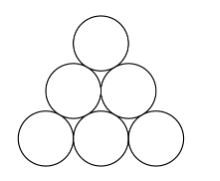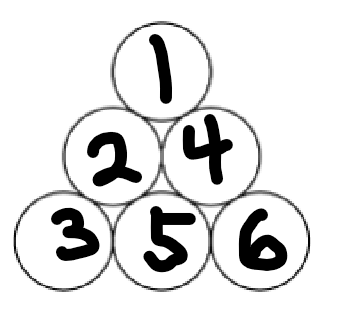I always wished the AMC could test Abstract Algebra. I mean, who wouldn’t? That’s why I went into Google and searched abstract algebra on the AMC, and amazingly I found something. Does this terrify you? That you might be the next unsuspecting victim of an abstract algebra problem on the AMC? Well, you are right to be scared. You should be TERRIFIED. But don’t worry, your salvation is in front of you. This article we will explain to you the magic and the terror of Burnside’s Lemma.
Before we see it written out, we must identify some notation and concepts. First, we introduce the notion of a group. This concept deserves its own article (and a lot more), but a simple definition is that it is a set of elements with a binary operation, such that there exists an identity, is invertible, and is associative. Writing this out, this means if is a group, then there is a function , i.e. , there exists such that . The other properties mean (identity) there exists , such that , , (invertible) , there exists such that and (associative) , .
A common example of a group is the set of integers under addition since taking the is your identity, negation is your inverse, and obviously, addition is associative.
Alright, but we are not done yet, we also need to define a Group Action. A group action is when we consider a group as a function that acts on a set . This means that , , i.e. and , . Moreover, these group actions also have to follow their binary operation under composition. So we have that .
One example of a -action is if we take where is a clockwise rotation on the plane by degrees, and the binary operation is composition, so Then we can take to be the vertices of the cube. Then and

We also have to identify what Orbits are. We’ll define as the orbit of , which is basically where the element can go once you take as the function of an element of - hence the name. Formally, we have Kind of the opposite, we also define as the elements in which are fixed by , i.e. .
Ok, we are almost there. To understand the lemma, we first have to see a fact about orbits. This is that they collectively partition the set . To see why this is true, consider the example from before when was the vertices of a cube, and . Here we see that each point on the lower face can be sent to every other point on the lower face but no other points. Similarly, the top points can be sent to each other but nowhere else. Thus the two orbits partition the total set of vertices into the vertices on the top face and on the bottom face.
Finally, here comes the lemma: If there is a group action on by the group , then the number of distinct orbits is or in other words, the number of distinct orbits is the average size of the number of elements stabilized by an element of .
I know, it looks kinda scary, but let’s see it in action, with, as promised, an AMC problem:
Problem 13 AMC 12B 2017:
In the figure below, of the disks are to be painted blue, are to be painted red, and is to be painted green. Two paintings that can be obtained from one another by a rotation or a reflection of the entire figure are considered the same. How many different paintings are possible?

Let’s rewrite the problem in terms of Burnsides Lemma. In this case, the group action is rotations and reflections, so specifically our group is where is a rotation by degrees and is reflecting vertically, North West to South East, and North East to South West respectively. It can be verified that is a group if we take the binary operation to be composition.
Now we take our set to be the total number of diagrams. Then the question is asking for the number of distinct orbits under , since accounts for the rotations and reflections. This we know is
so all we need to do is find the number of diagrams that are stable under each element of . Lets number the circles as following so we can easily reference them:
 If , then every disk is disk is unaffected, so all diagrams are fixed. Thus .
If , then every disk is disk is unaffected, so all diagrams are fixed. Thus .
If , then we can see no disk is fixed, so if we want to stabilize the diagram, then it must be that the colors of and are the same. This is impossible so .
If , then its the same thing so .
If , then and are fixed, but if we want to stabilize a diagram, then the colors of and must be the same. The only configuration that works is if or is green and the other is blue, is blue or red, and is the one was not. In total
The cases where and are the same as . Thus in total, we have
We did it! We corrupted the AMC with Abstract Algebra! This shows that no matter how you try to hide from it, Abstract Algebra will always creep up on you. Who knows, maybe Burnsides Lemma will appear on the AMC next year, but now you’ll be ready.
